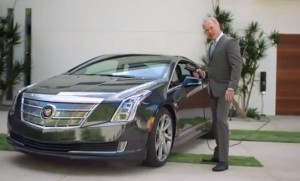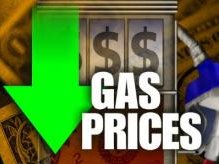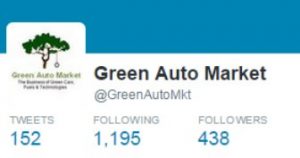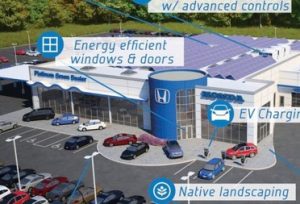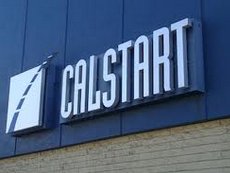by Jon LeSage, editor and publisher, Green Auto Market
Here’s my take on the 10 most significant and interesting occurrences during the past week…….
- It’s hard to tell how seriously luxury and sports car buyers are taking plug-in technology. Automotive News just placed the Cadillac ELR plug-in hybrid at the top of its “blunders of 2014” list. Cadillac was taken to task for pricing the car at $75,995 and only selling 1,192 units since its introduction at the beginning of 2014. The styling may have “surprised the world,” but the pricing took it out of consideration for anyone likely to buy one, said Aaron Bragman, Cars.com’s Detroit bureau chief. Tesla Motors may be down in sales on its Model S luxury all-electric car. com and Baum and Associates reported 1,450 units sold in November while InsideEVs reported 1,200 – down from September and October 2014 sales numbers. Tesla doesn’t report those numbers until its quarterly reports come out, but sales may be down and its stock price has dropped lately. One the other side of the coin, German automakers are still taking the Tesla competition seriously and plan to roll out a series of direct competitors between 2018 and 2021 with the Model S and future Tesla products. These new vehicle launches from Audi, BMW, Mercedes-Benz, and Porsche will be priced between $65,000 to more than $125,000 – and represent a total investment of about $7.5 billion for these German automakers. Fisker Automotive and its Wanxiang Group owner will be watching all of it closely as the Karma rolls out again. Analysts, stock traders, and investors will need to have a few questions answered. How much are car buyers/lessees willing to spend on luxury, sporty electric cars? What would it take to get these high-income consumers to take these technologies seriously?
- Will the US rollback on the 54.5 mpg fuel economy standard by 2025 during the 2017 midterm review? Will declining gasoline prices force the issue? Not necessarily, according to an analysis piece in WardsAuto. Automakers are globalizing their vehicle technologies and emissions regulations in key markets are ruling out allowing for major changes. Europe isn’t backing off its tough CO2 emissions rules. Making changes strictly for the U.S. market could end up costing more money than it would save.
- Navigant Research thinks global carbon emissions standards will be serious enough to mean that by 2017, over half of all vehicles sold globally in 2017 will be powered by technologies other than conventional gasoline engines. Electrified transportation and alternative fuels will continue to grow, but gasoline will continue to be the leading fuel in year ahead; many of the fuel economy gains will come through fuel-efficient technologies such as smaller engines and turbocharging. Incremental improvements in engines and transmissions, and vehicle weight reduction in as many places as possible, will play into meeting those targets.
- The California Energy Commission (CEC) is offering $4 million for Applied Research and Development projects “that will advance technologies and strategies for smart and efficient charging and vehicle-to-grid communication interfaces that will provide maximum benefits to both the electricity grid and the plug-in electric vehicle (PEV) market.” The project is aiming to encourage EV drivers to charge when grid demand is low and/or renewable energy sources are abundant. CEC will host a workshop on its PON-14-310 (program opportunity notice) in Sacramento on Jan. 7, 2015. Final applications are due Feb. 6, 2015.
- The US Department of Energy (DOE) will be hosting a meeting at its Washington, DC headquarters on Feb. 25, 2015, to create a five-year strategic plan for Clean Cities. It’s been five years since such a meeting has happened, joining together Clean Cities Coordinators, DOE staff, national laboratories, and energy and transportation experts. It’s part of supporting Clean Cities’ national goal of displacing 2.5 billion gallons of petroleum per year by 2020.
- Tesla CEO Elon Musk has been tweeting about a company announcement – the Roadster will be able to travel nearly 400 miles on a single charge, up from about 245 miles. That will come from a new prototype package the company calls Roadster 3.0 with an improved lithium ion battery that provides 31% more energy. Range extension will also be supported by a retro-fitted aero kit to improve the vehicle’s coefficient of drag, and low-resistance tires that are 20% better than their previous version on the Roadster.
- Royal Dutch Shell’s joint venture in Brazil, Raízen, will be spending close to $1 billion on “second generation” ethanol plants in that country. Brazil’s largest ethanol producer will invest in eight plants before 2024 to increase biofuel output up to 50% to produce biofuel from sugarcane waste. This is happening as several Brazilian ethanol producers have been struggling to stay open – and it could represent more confidence in second generation, advanced biofuels.
- It looks like California’s regulatory standards on self-driving cars will be delayed. The state’s Department of Motor Vehicles (DMV) announced it will miss a state Senate deadline to establish public regulations for autonomous vehicles by Jan. 1, 2015. Safety concerns are the main reason for the delay; possible regulations will be discussed at a public workshop in Sacramento in late January. In the meantime, DMV will be gathering feedback from industry, academic, and industry groups. There’s much interest on what California does in the absence of federal safety standards or independent organizations testing the safety of these vehicles.
- Greenbelt Resources was chosen as the “Best Biofuels and Biochemicals Solution” in The New Economy Magazine’s 2014 Clean Tech Awards. The company’s modular small-scale organic waste recycling technology converts food-based waste into consumable products and renewable energy. PortTech Los Angeles had named Greenbelt Resources as one of the top 10 clean technology startups for 2014.
- China’s southern city of Shenzhen, located next to Hong Kong, has become the latest city to cap new vehicle sales to control smog and traffic congestion. Shenzhen has capped new vehicle license plates at 100,000 a year with an annual quote of 20,000 electric vehicles (which can be adjusted for changes in traffic, air pollution, and car demand). The city follows similar policies enacted at other Chinese municipalities setting quotas on new vehicles: Beijing, Guangzhou, Guiyang, Hangzhou, Shanghai, and Tianjin.
